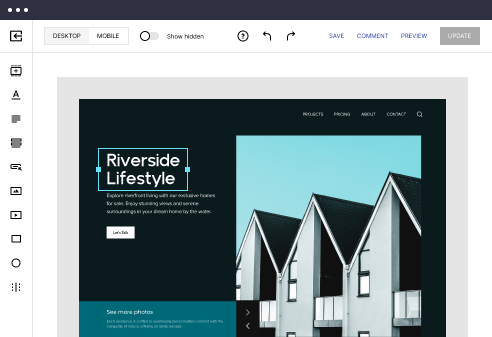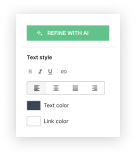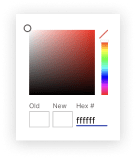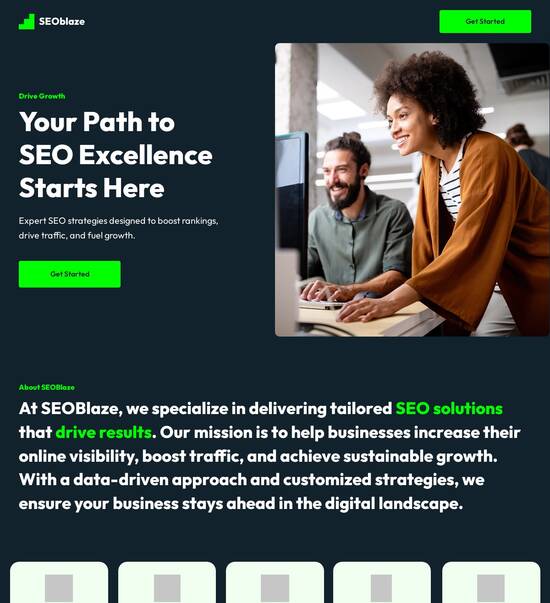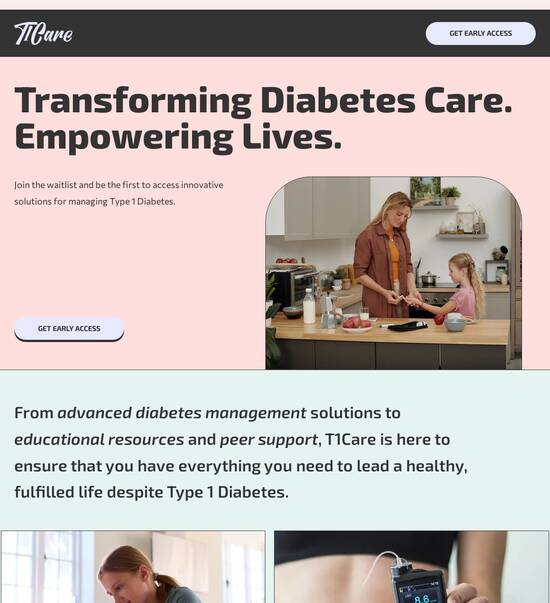
Next.js optimized referral program page template
Explore Similar TemplatesAbout template
Supercharge your referral program page with Next.js for outstanding performance! Learn more today.
Recommended templates
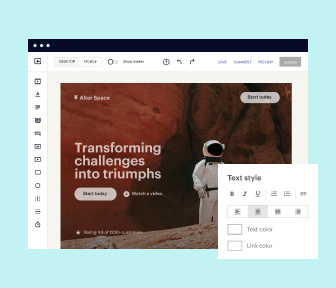
Easy to build without coding
With the intuitive drag-and-drop builder, anyone on your team can create high-converting pages without any knowledge of code or design. Make enhancements to your landing page with custom widgets using Javascript, HTML/CSS, or third-party scripts.
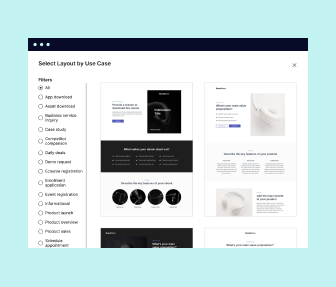
Multiple layouts for any industry and goal
Select from 500+ landing page layouts built to boost conversions across industry-specific scenarios. Customize them by adjusting fonts, adding images, and generating on-brand content with the AI assistant. Quickly scale with Instablocks® and Global Blocks that you can save, reuse, and update globally.
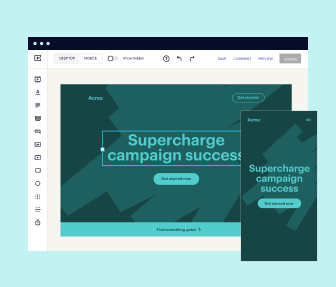
Loads fast and looks polished on any device
Every template is responsive, which means they present professionally on any device and load blazingly fast with our Thor Render Engine. You can also power them up with Google AMP technology to deliver an unparalleled mobile experience and drive higher conversions.
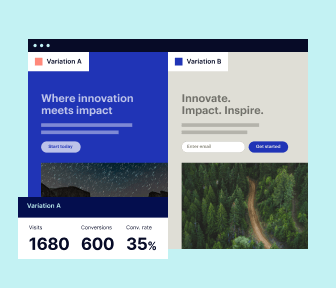
Robust analytics & experimentation
Get real-time updates and reporting across all your devices, showing the number of visitors, conversions, cost-per-visitor, and cost-per-lead. Launch AI-powered experiments, run A/B tests, and use heatmaps to analyze user behavior, then optimize your landing page to maximize conversions.

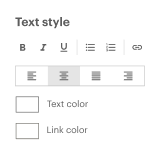
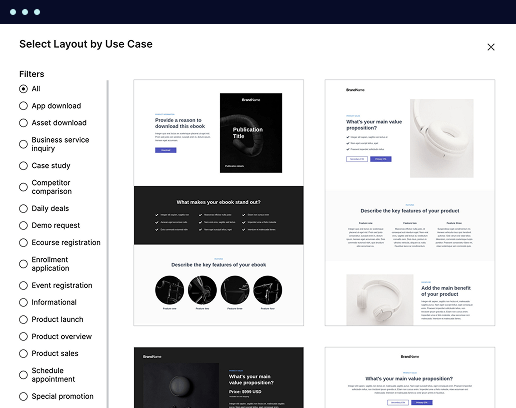
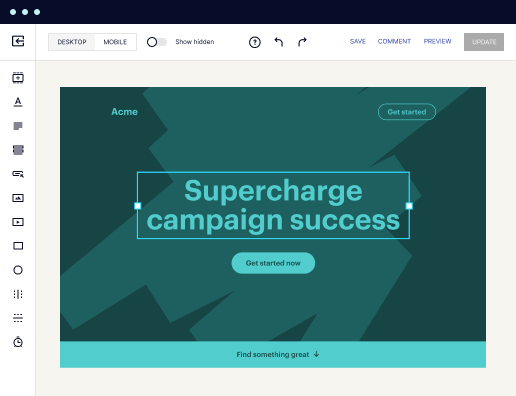
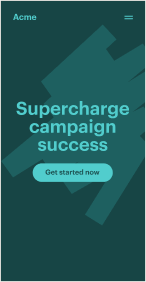
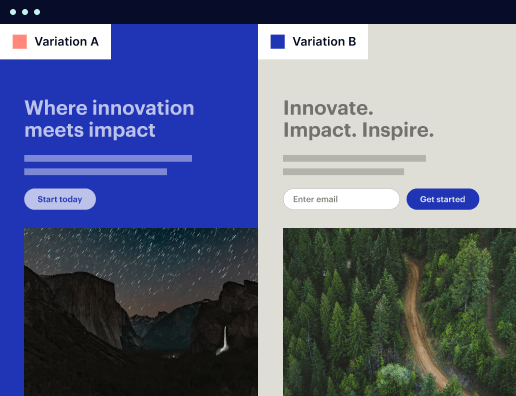

Easy to build without coding
With the intuitive drag-and-drop builder, anyone on your team can create high-converting pages without any knowledge of code or design. Make enhancements to your landing page with custom widgets using Javascript, HTML/CSS, or third-party scripts.
Multiple layouts for any industry and goal
Select from 500+ landing page layouts built to boost conversions across industry-specific scenarios. Customize them by adjusting fonts, adding images, and generating on-brand content with the AI assistant. Quickly scale with Instablocks® and Global Blocks that you can save, reuse, and update globally.
Loads fast and looks polished on any device
Every template is responsive, which means they present professionally on any device and load blazingly fast with our Thor Render Engine.
Robust analytics & experimentation
Get real-time updates and reporting across all your devices, showing the number of visitors, conversions, cost-per-visitor, and cost-per-lead. Launch AI-powered experiments, run A/B tests, and use heatmaps to analyze user behavior, then optimize your landing page to maximize conversions.
All the features you need to build referal link nextjs
Explore more featuresLearn how to build top-performing landing pages for any goal
FAQs
Leading the way in building high-performing landing pages





A comprehensive guide to using Instapage for high-converting landing pages
With the rise of digital marketing, creating high-converting landing pages has become essential for businesses in various sectors. Instapage stands out as the most powerful landing page and conversion rate optimization (CRO) platform, enabling marketers in business services, education, and tech to accelerate their campaigns effectively. This guide delves into how Instapage can transform your digital marketing strategies.
Understanding the power of Instapage in landing page creation
Instapage allows users to create bespoke landing pages tailored to unique audiences. Its intuitive builder and extensive library of templates mean marketers can craft pages without needing coding skills. This feature is especially beneficial for small teams or solo marketers, facilitating quick and effective campaign launches.
- User-friendly interface: Instapage features an easy drag-and-drop interface, streamlining the design process.
- 100+ high-converting templates: Choose from a variety of professionally designed templates or start from scratch, giving flexibility to marketers.
- Integrated lead generation elements: Effortlessly add forms and call-to-action buttons to capture leads directly.
Step 1: Building your first landing page
Begin by choosing an appropriate template that aligns with your marketing goals. Once selected, use the drag-and-drop tools to customize the layout to suit your campaign's message.
Step 2: Optimizing the landing page for conversions
Once your page is designed, it’s time to optimize for better performance. Focus on A/B testing, using Instapage’s built-in experimentation features to determine what resonates best with your audience.
- Implement A/B testing: Compare different versions of your landing page to understand which elements lead to higher conversion rates.
- Utilize heatmaps: Analyze on-page behavior and identify where your visitors are most engaged.
- Adjust copy and images: Use analytics insights to tweak your headlines, images, and call-to-action for maximum effectiveness.
Step 3: Personalizing experiences for different audiences
After optimization, tailor your content for diverse audience segments. Instapage's features, such as dynamic text replacement, allow for personalized messaging that increases engagement.
- AdMaps for targeted ads: Align specific ads with unique landing pages to maximize relevance and effectiveness.
- Audience-level tracking: Monitor different metrics for various segments to tailor future marketing efforts.
- Dynamic content delivery: Automatically present the most relevant content based on visitor demographics and behaviors.
In conclusion, leveraging the diverse features of Instapage not only accelerates your campaign execution but also maximizes your ROI through carefully crafted landing pages designed to convert.
Start transforming your digital marketing efforts today with Instapage. Sign up to explore the full capabilities of this powerful tool and see immediate results in your campaigns.
Next.js optimized referral program page template
Understanding Next.js and its role in creating optimized referral program pages
Next.js is a powerful React framework that provides an excellent environment for building optimized referral program pages. With its flexibility and innovative features, Next.js allows developers to create performance-driven applications that enhance user experiences. Many businesses harness its capabilities to enhance their referral marketing strategies, focusing on quick load times and seamless interactions. This makes it an ideal tool for creating engaging and conversion-focused referral pages which are fundamental in driving new user acquisition through referrals.
What sets Next.js apart is its ability to handle server-side rendering (SSR) and static site generation (SSG) efficiently. This means that not only can your referral program pages load faster, but they also perform better in terms of search engine optimization (SEO). Consequently, pages built with Next.js are more likely to rank higher in search results, allowing businesses to attract and retain more users. By harnessing this framework, marketers can easily create engaging landing pages that make a positive first impression, ultimately increasing user engagement and conversion rates.
The rise of referral programs
Referral programs have gained substantial traction in recent years, becoming a crucial component of many businesses' marketing strategies. According to various studies, average referral conversion rates hover around 3-5 times that of regular marketing channels. Companies like Dropbox and Airbnb owe much of their staggering growth to their well-structured referral schemes. Notably, both brands personalized their referral pages, creating a clear and attractive call-to-action that encouraged users to share their offerings with others.
An effective referral page serves as the gateway to user engagement. It’s important not just to attract users but to keep them interested and informed. The design and layout of this landing page can heavily influence conversion rates—research indicates well-designed referral pages can boost conversions by up to 50%. Ensuring that your referral program page is user-friendly and visually appealing is essential to retain visitors and encourage them to participate actively in your referral program.
Growth statistics highlight the efficacy of referral marketing.
Successful case studies from brands like Dropbox and Airbnb.
Impact of design and user engagement on conversion rates.
Unpacking the Next.js framework
Choosing Next.js for referral program pages is primarily about maximizing the performance and user experience. The framework's server-side rendering capabilities cater to SEO needs effectively, making your pages not just visible but also appealing to search engines. This capability ensures that pages load faster while users benefit from improved navigation and overall satisfaction on your referral pages.
Moreover, the dynamic routing capabilities of Next.js ensure that your referral program can easily scale over time. By just creating new pages, you can manage varying referral promotions or unique referral links for different user segments effortlessly. These features empower businesses to create unique, engaging, and optimized referral pages that resonate with their audiences, leading to increased conversions and greater returns on marketing investments.
SEO benefits through server-side rendering.
Fast performance and enhanced user experience.
Dynamic routing allows for scalable referral program management.
Designing the referral page: essential UI components
A well-designed referral program page is pivotal for attracting users. Key UI components play a significant role in ensuring visitors understand what is being offered and what actions they must take. The referral component, which outlines the program's benefits, needs to be straightforward and easily understandable. Alongside this, visuals like images or icons can help convey complex information more readily and thus set clear expectations about what users can earn through referrals.
Moreover, effectively designed call-to-action buttons can significantly impact engagement. They should be visually distinct and provide clear directions—whether that's signing up or sharing a referral link. These CTAs must be strategically placed, ensuring users encounter them at the right moment in their engagement journey.
Highlight key aspects of the referral program.
Deploy visuals to aid in information retention.
Design compelling call-to-action buttons.
Building a robust referral system using Next.js
Building a reliable referral system involves structuring the referral component efficiently. This structure involves defining how referrals are created, tracked, and managed. By establishing a clear process for users to refer their friends or colleagues, you can ensure that the experience is seamless from start to finish. Essentially, by utilizing Next.js, this tracking can be done with built-in functions that allow for easy integration with other components.
Additionally, leveraging a centralized data context can help manage users' accounts seamlessly. A well-structured API can fetch and display user-related data systematically, ensuring that all information is presented in real-time. With user referrals visible and trackable, you create a transparent environment where both referrers and referees can see their rewards and progress.
Establish a seamless process for referrals.
Utilize a centralized data context for effective management.
Integrate APIs to maintain real-time data visualization.
Developing with a focus on codebase optimization
In the context of building referral program pages, codebase optimization is vital for ensuring smooth functionality. Creating custom components in Next.js allows developers to develop uniquely powerful functionalities that support the referral system. This modular approach not only enhances performance but simplifies debugging and testing processes, which is crucial for maintaining a consistently high-quality user experience across your referral programs.
Efficient data management is equally important within a Next.js application. Utilizing state management strategies allows businesses to maintain a clean and organized codebase. By taking advantage of the Context API, developers can ensure that data flow is streamlined across the application. This efficiency reduces potential downtimes and enhances user experience by maintaining responsiveness during data fetch operations.
Craft custom components for specialized functionalities.
Ensure data flow is smooth using Context API.
Focus on modular development for easier debugging.
Enhancing the user experience through end development practices
The user experience can greatly benefit from optimized load times and responsive designs. Ensuring your referral pages are optimized for fast loading is essential to decrease bounce rates. Techniques can involve compressing images, minimizing JavaScript execution, and leveraging cache effectively. Attention to load times fosters improved user satisfaction as visitors are likely to explore more if they perceive the page has loaded quickly.
Moreover, mobile responsiveness is non-negotiable given that an increasing number of users are accessing websites through their smartphones. Designing your referral program page with mobile users in mind ensures that you cater to a wider audience. Additionally, incorporating user testing and gathering feedback can lead to actionable insights for continuous improvement. A/B testing offers a way to iterate on various design elements, helping to determine which approaches yield the highest conversion rates.
Employ techniques to minimize loading times.
Design for mobile responsiveness.
Implement A/B testing for ongoing improvements.
Advanced features and integration techniques
Leveraging APIs can play a pivotal role in developing dynamic referral programs. By integrating third-party APIs, businesses can provide users with real-time updates and pertinent data related to their referrals. For example, integrating with popular payment gateways can facilitate immediate rewards or incentives for successful referrals, enhancing the overall program attractiveness.
The setup of API calls in a Next.js application is straightforward, thanks to built-in functions that rout data requests efficiently. Additionally, enhancing the referral experience through cross-promotion techniques can create cohesive user journeys across multiple pages. By strategically directing users to relevant sections of your site or other marketing initiatives, you can maximize overall user engagement—paving the way for a successful referral program.
Explore third-party APIs for enhanced functions.
Utilize built-in functions for efficient API calls.
Implement cross-promotion for cohesive user journeys.
Case studies of successful implementations
Analyzing high-performance referral page templates can provide valuable insights into what works best in the market. A review of top-performing pages created in Next.js reveals essential practices such as clean design, concise messaging, and clear incentives. Companies that succeed in this space often share similar traits, including a focus on user experience and an understanding of their target audience's needs.
Key takeaways from these efforts indicate that optimizing landing pages does not just correlate with improved conversion rates—it also positively impacts overall brand perception. Real-world customer testimonials often highlight significant improvements in referral conversions when implementing a fresh, dynamic design aimed at user engagement.
Insights from analyzing successful referrals pages.
Shared traits among high-performing companies.
Customer testimonials showcasing improved referrals.
Final thoughts on Next.js and referral program page optimization
The future of referral marketing continues to evolve, presenting new challenges and opportunities. Emerging technologies and changing consumer behaviors necessitate robust strategies for marketers to stay relevant. Next.js positions itself as a reliable framework that can adapt to these changes, ensuring organizations can scale their efforts while optimizing for performance and SEO. Businesses that leverage Next.js are likely to be at the forefront of this landscape.
To separate your referral program from competitors, opting for tailored templates can provide unique advantages. As referral marketing remains reliant on optimizing user experiences, Next.js enables dynamic updates and personalization which keeps users engaged. A focus on continual improvement through user testing and feedback remains critical, ensuring businesses can cater to their audience effectively and keep driving conversions.
Emerging trends in referral marketing and their impact.
Next.js’s adaptability to evolving marketing strategies.
Continued user-focused design as a key to marketing success.
Ready to skyrocket conversions?
Supercharge your ad campaigns with high-performing landing pages
Get started